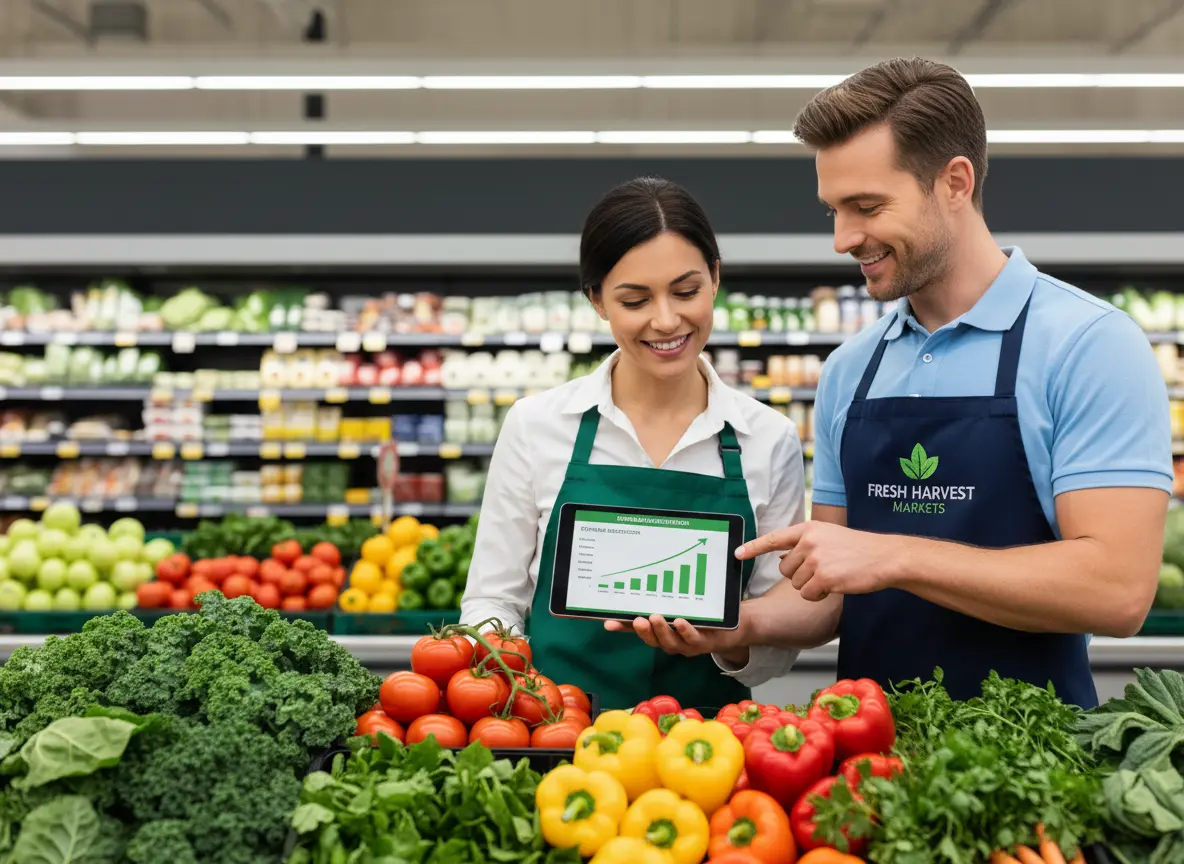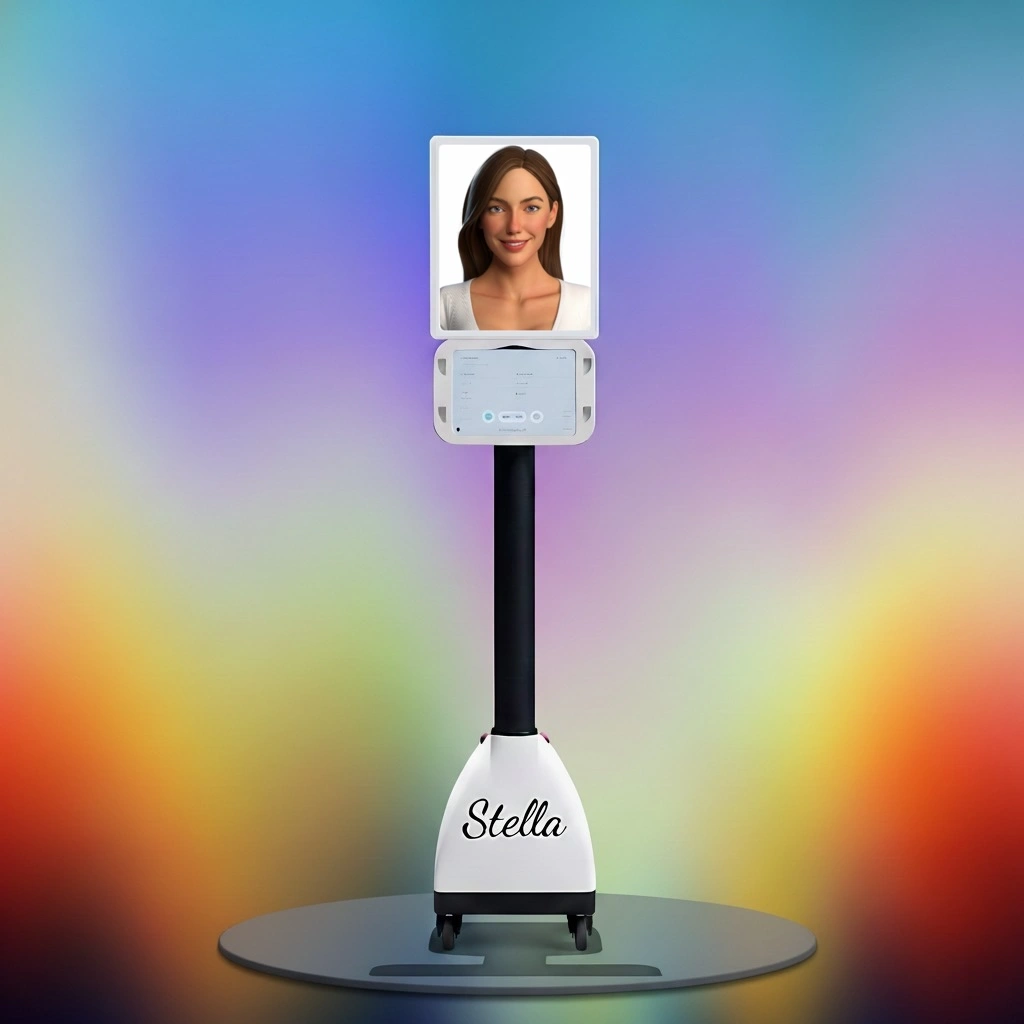The Grim Reality of the Grocery Game
Let’s be honest. There’s a particular smell in a grocery store that’s the opposite of “freshly baked bread.” It’s the faint, sweet, slightly funereal scent of money actively decomposing in your produce section. You know the one. It’s the ghost of wilted lettuce past, the specter of squishy tomatoes future. This, my friends, is the smell of spoilage—the silent, stinky thief that nibbles away at your profit margins one bruised peach at a time.
Food waste isn't just a PR problem for Earth Day; it's a direct assault on your bottom line. According to the Food Marketing Institute, the average grocery store loses tens of thousands of dollars annually to unsalable, spoiled food. That's a new delivery truck, a store renovation, or a very, very nice vacation down the drain. But here’s the good news: spoilage isn’t an inevitable cost of doing business. It’s a puzzle. And with the right formula, you can solve it.
So, put on your metaphorical lab coat. We’re about to dissect the problem and cook up a strategy—the Freshness Formula—to turn your spoilage-related losses into sustainable profits. It’s time to stop throwing money in the dumpster and start putting it back in your pocket.
Mastering the Back Room: Your First Line of Defense
You can have the most beautiful displays and the cleverest marketing in the world, but if your back room operates like a chaotic science fair project, you’re already losing the battle. The fight against spoilage begins long before a customer ever lays eyes on your produce. It begins with rigorous, disciplined, and—dare we say—loving care of your inventory.
The Art of the FIFO Tango (First-In, First-Out)
Ah, FIFO. The sacred mantra of inventory management. We all know what it stands for, but are we truly living it? Or is your stock rotation more like LIFO (Last-In, First-Out), where the new, spry young lettuces are pushed to the front while their older, wiser brethren slowly turn to green sludge in the back? True FIFO is a dance. It requires precision, training, and a team that understands why finding a fossilized avocado from three shipments ago is a cardinal sin.
Implementing a flawless FIFO system isn’t just about yelling "Rotate the stock!" into the void. It’s about process:
- Clear Date-Marking: Every case that comes in should be clearly marked with the delivery date. Use a big, bold marker. Make it impossible to ignore.
- Designated "Work-From" Areas: New stock goes in one spot, and your team pulls only from the oldest stock in another. Don't let new and old shipments mingle; they'll get ideas.
- Train, Train, and Retrain: Your staff is your front line. They need to understand that proper rotation isn’t just busywork—it’s directly linked to the store’s profitability and their job security. Make it part of every new hire’s orientation and a regular topic in team meetings.
Is Your Walk-In Cooler a Science Experiment?
Your walk-in cooler should be a sanctuary of freshness, not a petri dish for undiscovered life forms. Temperature and humidity aren't just suggestions; they're commandments. A few degrees off can slash the shelf life of your most sensitive products. A recent study showed that maintaining proper refrigeration temperatures could reduce annual food waste by up to 18%.
But it's not just about the cold. You also have to play matchmaker with your produce. Some fruits and veggies are notorious for releasing ethylene gas, a natural ripening agent. Think of it as the produce world’s most influential (and gassiest) friend. Storing an ethylene producer like an apple next to an ethylene-sensitive item like broccoli is a recipe for premature yellowing and spoilage. You’re essentially telling your broccoli to live fast and die young.
A quick cheat sheet:
- Ethylene Producers (The Bad Influences): Apples, avocados, bananas, cantaloupes, peaches, pears, tomatoes.
- Ethylene Sensitives (The Impressionable Youth): Asparagus, broccoli, carrots, cucumbers, grapes, leafy greens, squash.
Separate them like you're chaperoning a middle school dance. Your vigilance will be rewarded with produce that stays vibrant and sellable for days longer.
The Supply Chain Whisperer
You can have perfect back-room processes, but if your ordering strategy is based on a gut feeling and whatever the salesperson is pushing this week, you’re gambling with your inventory. Become a supply chain whisperer. Use your sales data—your actual, real-world sales data—to predict demand. Are Tuesdays always big for salad greens? Do berry sales spike on Fridays? Your Point-of-Sale system is a treasure trove of information. Use it.
Consider forging relationships with local suppliers. While it might require more logistical work, the benefits are huge. Produce that travels fewer miles arrives fresher, boasts a longer shelf life, and gives you a fantastic marketing story. Shorter supply chains mean less time in transit and more time on your shelves looking fabulous. Ditching a single, massive weekly order for two or three smaller, more frequent deliveries can be a game-changer, ensuring a constant flow of peak-freshness products and minimizing the risk of overstocking.
Front-of-House Finesse: Selling It Before You Smell It
Alright, your back room is a well-oiled machine. Now it's time to influence what happens on the sales floor. The goal is to use smart, subtle strategies to guide customers toward items that need to move, turning potential waste into profitable sales. It’s less about manipulation and more about clever matchmaking.
Strategic Merchandising: It's Not Just a Pretty Display
Merchandising isn’t just about stacking apples in a perfect pyramid. It’s about psychology. Create a designated "Imperfectly Perfect" or "Ripe & Ready" section. Shoppers are increasingly open to buying produce that’s slightly misshapen or ready-to-eat today, especially at a slight discount. A study by the University of Pennsylvania found that simply labeling items as "ugly" can increase their sales.
Cross-merchandising is your other best friend. Those slightly-too-ripe bananas? Don't hide them. Place them next to the cake mixes, oatmeal, and chocolate chips with a sign that screams, "Your Banana Bread Awaits!" Got a bumper crop of tomatoes that are at their absolute peak? Merchandise them with fresh mozzarella, basil, and a bottle of balsamic glaze. You’re not just selling a product; you’re selling a meal, an idea. You’re making it easy for the customer to see the potential, not the ticking clock.
Your Secret Weapon for Quick Sales
Sometimes, a simple sign isn't enough. You need a little personality, a gentle nudge. This is where you can deploy a secret weapon at the front of your store. Imagine a friendly, helpful presence that can greet customers and guide them toward these fantastic, time-sensitive deals. This is exactly where an in-store assistant like Stella shines.
Instead of relying on a busy cashier to remember to mention the ripe avocados, Stella can be programmed to highlight them as part of her welcome message. "Welcome to Fresh Market! If you're planning on making guacamole for the big game, you're in luck. We have perfectly ripe avocados in our 'Ready Today' section for 40% off!" It’s a targeted, helpful, and non-aggressive way to direct traffic and move product that's nearing its expiration. She turns a potential loss into a win-win: the customer gets a great deal, and you clear your inventory. Problem solved.
The Data-Driven Grocer: Smarter Systems, Less Waste
Gut feelings are great for choosing a lunch spot, but they’re a terrible way to run a multi-million dollar inventory. In the 21st century, the most successful grocers are leveraging technology and data to make smarter, more predictive decisions that prevent waste before it even has a chance to happen.
Beyond the Clipboard: Modern Inventory Management
If you’re still managing your inventory with a clipboard and a well-worn pencil, we need to talk. Modern inventory management systems are more than just digital spreadsheets; they are predictive engines for your business. These systems can track products from the moment they’re received to the moment they’re sold, automatically flagging items that are approaching their best-by date. Some advanced systems even integrate with dynamic pricing tools, automatically applying a small discount to items as they age, increasing the likelihood of a sale and maximizing revenue from every last piece of produce.
The initial investment might seem daunting, but the ROI is undeniable. A report from Coresight Research suggests that AI-powered inventory management can reduce spoilage by up to 50%. Compare that to the cost of tossing out a few cases of organic berries every week, and the math becomes painfully clear. It’s time to let the machines do the heavy lifting so you can focus on strategy.
Waste Audits: Facing the Trash Can of Truth
Nobody wants to dig through their own garbage, but a waste audit is one of the most eye-opening things you can do for your store. It’s a detective story where the victim is your profit margin. For one week, instead of just tossing expired or spoiled items, track them. Meticulously.
Create a simple tracking sheet with columns for:
- Item Name
- Quantity/Weight Discarded
- Reason for Spoilage (e.g., damaged in transit, over-ripe, past date)
- Supplier
- Cost of Goods
At the end of the week, the data will tell a story. You might discover you’re consistently over-ordering specialty mushrooms or that your bagged salads are always the first to go. This isn't about blame; it's about insight. This "trash can of truth" gives you the hard data you need to adjust your ordering, refine your handling processes, and make targeted improvements.
The Power of the People: Incentivizing Freshness
Technology is a powerful tool, but it's your team that brings the Freshness Formula to life. A well-trained, motivated staff is your ultimate defense against spoilage. Invest in training your produce team to be true experts. They should know how to identify the subtle signs of ripeness and decline, how to handle delicate items, and how to talk to customers about using produce at every stage.
Consider creating a little healthy competition. Implement an incentive program for the department or team that achieves the lowest spoilage rate for the quarter. The reward doesn’t have to be massive—a team lunch, a small bonus, or even just bragging rights can go a long way. When your team is personally invested in reducing waste, they become proactive problem-solvers, spotting issues and rotating stock with a new sense of purpose.
A Quick Reminder About Stella
Remember that secret weapon we talked about? She’s not just for moving ripe produce. Stella is your tireless 24/7 brand ambassador, greeting every customer, promoting your weekly specials, and answering common questions. She frees up your human team to focus on the critical, hands-on tasks—like executing the Freshness Formula—that keep your store profitable and your customers happy.
Conclusion: From Waste to Wealth
Reducing spoilage is not a single action; it's a cultural shift. It’s a commitment to excellence that starts in the back room, shines on the sales floor, and is powered by intelligent data. By mastering inventory rotation, optimizing your storage, getting creative with merchandising, and empowering your team, you can fundamentally change your relationship with waste.
Stop thinking of spoilage as an unavoidable tax on being in the grocery business. Start seeing it for what it is: a solvable problem and a massive opportunity. The Freshness Formula isn’t magic—it’s a combination of process, people, and technology.
So, what’s your next step? Don’t try to do everything at once. Pick one area—just one—from this guide and commit to improving it this week. Conduct a waste audit. Retrain your team on FIFO. Reorganize your cooler. Take that first step, and you’ll be on your way to transforming that faint, costly smell of spoilage into the sweet, beautiful scent of success.





















